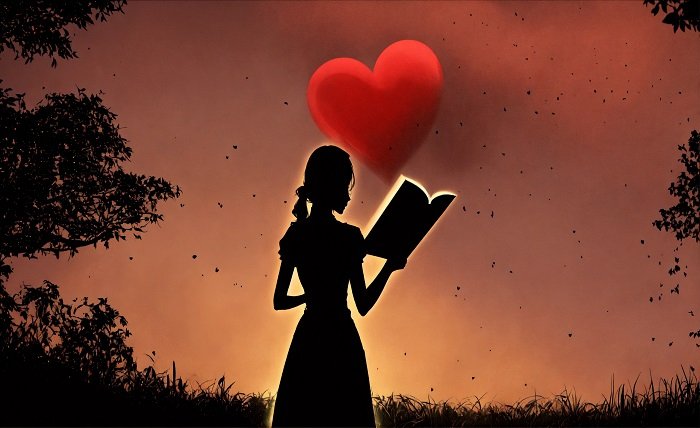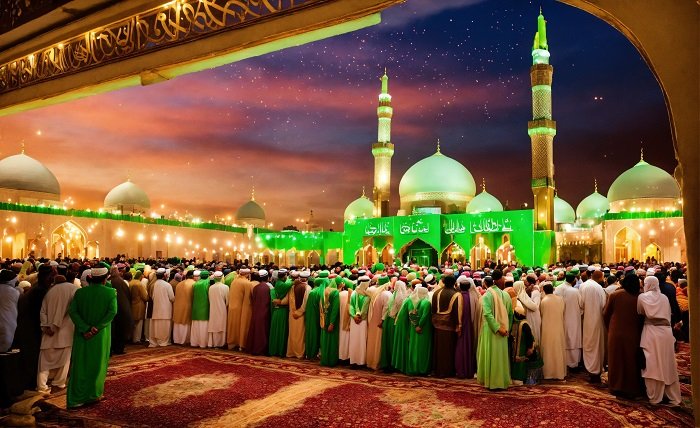
In the vast and diverse universe of poetry, a unique and captivating genre has been blossoming at the intersection of Eastern emotion and Western expression: English shayari. This beautiful fusion represents more than just words on a page; it is a cultural dialogue, a bridge between the profound, soul-stirring essence of traditional Urdu poetry and the global accessibility of the English language. English shayari is not a replacement for its classical predecessor but rather an evolution, a new vessel carrying the timeless cargo of love, loss, joy, and philosophical wonder to a wider audience. It captures the intricate beauty and emotional depth of the original form while weaving it into a linguistic tapestry that resonates with a generation spanning continents. For those who feel the pull of the shayar’s heart but lack the vocabulary of the East, English shayari offers a voice, a way to articulate the deepest corners of the human experience with a familiar yet novel poetic flair. The emergence of English shayari is a testament to poetry’s living, breathing nature, constantly adapting and growing to meet the needs of new hearts and new times.
This art form thrives in the space where two rich poetic traditions meet. From the East, it inherits its soul—the themes of unrequited love (ishq), poignant longing (justaju), profound sadness (gham), and spiritual seeking. It embraces the structure of the couplet (sher) and often the rhythmic discipline of the ghazal. From the West, it borrows its tongue—the vast lexicon, flexibility, and global reach of English. The result is a powerful, hybrid poetry that can express the concept of “dard” as “a pain that sings” or translate “hijr” (separation) into verses that ache with a universally understood loneliness. English shayari is for the global citizen, for the second-generation diaspora longing to connect with a cultural heritage, and for any poetry lover seeking a new, potent form of expression. It proves that the language of the heart is universal, and that the emotional weight of a beautifully crafted couplet can transcend any linguistic barrier, making the art of English shayari a vital and growing part of the contemporary literary landscape.
The Genesis of a Global Verse: The Rise and Evolution of English Shayari
The story of English shayari is inextricably linked to the broader narratives of migration, globalization, and the digital revolution. Its roots can be traced back to the South Asian diaspora, particularly in countries like India, Pakistan, Bangladesh, the UK, the USA, and Canada. As generations grew up with English as their primary language of education and communication, a cultural gap emerged. They were deeply connected to the emotional world of their parents’ poetry—heard in songs, at weddings, and in gatherings—but often lacked the linguistic tools to engage with it in its original Urdu or Persian form. This longing to participate in a cherished cultural tradition became the primary catalyst for the creation of English shayari. It was a need to articulate a familiar, inherited emotional landscape using the language most natural to them.
The evolution of English shayari accelerated with the dawn of the internet and social media. Platforms like Facebook, Instagram, and dedicated poetry blogs provided a fertile ground for this new genre to flourish. Poets and enthusiasts who had been experimenting with writing English shayari in private notebooks found a global community online. They could share their work, receive instant feedback, and connect with others on the same creative journey. Instagram, with its visual and textual synergy, became a particularly powerful medium. Aesthetic images paired with couplets of English shayari allowed for a multi-sensory experience, where a picture of a rainy window could amplify the melancholy of a verse about separation. This digital ecosystem democratized poetry, allowing English shayari to move from a niche interest to a widely recognized and appreciated form.
Furthermore, the translation and work of established bilingual poets played a crucial role in legitimizing and popularizing English shayari. While direct translation of classical Urdu poetry is famously challenging due to cultural context and wordplay, many scholars and poets undertook the task of creating poetic translations that captured the spirit, if not the literal meaning, of the original works. Exposure to the themes and structures of giants like Ghalib, Mir, and Faiz through English interpretations inspired a new wave of writers to create original English shayari that echoed those classic motifs. Today, English shayari is a recognized genre with a massive following, continuously evolving as it absorbs influences from modern English poetry and spoken word, all while staying true to its core objective: expressing deep emotion with elegance and conciseness.
The Structural Soul: Understanding the Forms of English Shayari
One of the most fascinating aspects of English shayari is how it adapts the traditional structures of Urdu poetry to fit the rhythms and cadences of the English language. The most influential form is undoubtedly the ghazal. A traditional ghazal has a strict structure: it’s a collection of autonomous couplets (shers) linked by a consistent meter and a rhyming scheme where the second line of each couplet ends with the same word or phrase (the radif). Writing a strict ghazal in English is a formidable challenge, but English shayari often adopts its spirit rather than its rigid rules. Many poets create poems that are ghazal-like—comprised of thematically linked couplets that explore a single emotion from different angles, mimicking the fragmented yet cohesive feel of the original form.
The cornerstone of English shayari, however, is the sher itself. A sher is a self-contained couplet that expresses a complete thought, emotion, or image. It is a miniature universe of meaning. In English shayari, the sher remains the fundamental building block. The first line (misra-e-oola) often sets the scene or poses a question, while the second line (misra-e-sani) delivers the impact—a resolution, a twist, a deeper insight, or a heartbreaking conclusion. The power of a great piece of English shayari often lies in the turn between these two lines. For example: “You called my name a thousand times in the crowd / And every time, it was a stranger’s voice that answered aloud.” This structure forces conciseness and power, demanding that every word earn its place, a key characteristic of all impactful English shayari.
Beyond the ghazal and the sher, English shayari also embraces free verse and other Western poetic forms, infusing them with an Eastern sensibility. A poet might write a longer poem (a nazm) in English but use the metaphors of a moth yearning for a flame or a nightingale singing to a rose—classic imagery from Urdu poetry. The result is a unique blend where the form is fluid and modern, but the soul is timeless. This flexibility is the greatest strength of English shayari. It is not bound by dogmatic rules but is instead defined by its intention: to convey deep, layered emotion in a way that pays homage to its roots while speaking clearly in a global language. Whether in a strict couplet or a free-flowing poem, the heart of English shayari beats with the same rhythm of passion and introspection.
A Tapestry of Themes: The Heartbeat of English Shayari
The emotional core of English shayari is inherited directly from its Urdu ancestor, making it a poetry deeply concerned with the intense and often tumultuous aspects of the human experience. The most dominant theme, by far, is love—but not simple, happy romance. English shayari specializes in exploring the multifaceted diamond of Ishq, which encompasses passionate longing, unbearable separation (hijr), heartbreaking unrequitedness, and sublime devotion. This love is often portrayed as a painful yet beautiful affliction, a source of both agony and ecstasy. A piece of English shayari might describe love as “a wound that blooms like a flower” or “a silence that screams your name,” capturing this central paradox that is so vital to the tradition.
Closely tied to love is the theme of pain and healing (dard aur dawaa). In English shayari, pain is not something to be avoided but is often romanticized as a proof of authentic feeling. It is a refining fire that reveals one’s depth. This pain can be from love, from the absence of the beloved, or from the existential anguish of life itself. Yet, this poetry rarely stops at despair. There is almost always a search for a cure, a meaning, or a way to transform pain into something beautiful—which is often the act of writing the English shayari itself. The poet finds medicine in the melody, turning their grief into verses that can then comfort others, creating a cycle of shared solace.
Furthermore, modern English shayari has expanded to include contemporary themes while retaining its introspective style. You will find powerful English shayari about social justice, mental health, identity, and the loneliness of urban life, all expressed with the metaphorical richness and emotional weight of the classic form. A poet might use the imagery of a crumbling wall to talk about anxiety or a locked door to discuss societal barriers. This ability to adapt its core emotional language to modern issues ensures that English shayari remains profoundly relevant. It provides a framework for processing the complexities of today’s world, proving that the ancient language of the heart is perfectly suited to articulate modern problems.
The Modern Voices: Platforms and Pioneers of English Shayari
The explosion of English shayari onto the global stage would have been impossible without the digital revolution. Social media platforms have acted as a global mushaira (poetic symposium), where poets and enthusiasts gather to share, appreciate, and critique work. Instagram is arguably the capital of modern English shayari. Poets create visually appealing posts, pairing their couplets or short poems with minimalist backgrounds, moody photography, or evocative artwork. Hashtags like #EnglishShayari, #Shayari, and #PoetryCommunity allow users to discover a endless stream of new work, connecting a teenager in Mumbai with a poetry lover in London through a shared couplet.
This digital landscape has given rise to a new generation of poets who have built substantial followings by mastering English shayari. Writers like R. M. Drake, r.h. Sin, and others, though not always explicitly calling themselves shayars, employ a style that is deeply reminiscent of the form—short, impactful, emotional couplets that resonate with a massive audience. Meanwhile, a wave of South Asian poets like smita (on Instagram) or books like “The Hindi-English Shayari” by various contributors are explicitly working within the tradition, consciously blending the two worlds. These modern voices are the pioneers, shaping the norms and expanding the possibilities of what English shayari can be, all while maintaining its emotional authenticity.
Beyond individual poets, entire websites and online communities are dedicated to curating and promoting English shayari. These platforms serve as valuable archives and learning resources, offering everything from beginner’s guides to deep dives into specific techniques. They host writing challenges, prompt-based activities, and virtual open mic nights, fostering a sense of community and collaborative growth. This accessibility is key to the genre’s vitality. Anyone with a phone and a feeling can try their hand at writing English shayari, share it with the world, and become part of this ongoing, global conversation of the heart. The community is welcoming, encouraging, and passionate, ensuring that the art form continues to thrive and evolve.
Crafting Your Own Couplets: A Beginner’s Guide to Writing English Shayari
If the soulful allure of English shayari inspires you to pick up the pen, beginning your journey is an exciting prospect. The first and most important step is immersion. Read widely. Explore classical Urdu poets in translation to understand the themes and depth. Then, read modern practitioners of English shayari on Instagram and other platforms. Notice their rhythm, their use of metaphor, and how they structure their couplets. This reading will subconsciously build your internal library of what effective English shayari feels like. Listen to the music of the words and pay attention to how a few well-chosen words can create a powerful image or evoke a strong emotion.
Start your writing practice by focusing on the sher, the two-line couplet. Don’t worry about rhyming perfectly at first; focus on the thought. Think of a strong emotion you’ve felt recently—a moment of joy, a pang of loneliness, a flash of love. Now, try to capture that feeling in two lines. Let the first line set it up: “I keep your memory in my silent room.” The second line should deliver the emotional punch: “It’s the only ghost I welcome in the gloom.” This cause-and-effect, setup-and-punchline structure is the engine of most great English shayari. Practice this daily. Write about what you see, what you feel, and what you remember. Your authentic experience is your best source material.
As you grow more comfortable, you can start to incorporate the classic metaphors and imagery that enrich English shayari. Think of emotions in terms of elements: pain as fire, love as water, sadness as rain. Use symbols like the moth (for a desperate lover), the flame (for the beloved or destruction), the nightingale (for a poet), and the rose (for beauty and its thorns). Don’t force them, but let them naturally find their way into your verses when they fit. Finally, remember that revision is where poetry is made. Write your first draft with feeling, then edit with craft. Read it aloud. Does it have a rhythm? Is every word necessary? Is the emotion clear? Writing English shayari is a craft that takes time to hone, but the process itself is a beautiful form of self-expression and discovery.
The Enduring Resonance: Why English Shayari Captivates the World
In a fast-paced, often superficial world, the enduring appeal of English shayari lies in its commitment to depth and authenticity. It offers a moment of pause, a chance to dive beneath the surface of everyday life and connect with the fundamental emotions that make us human. It provides a vocabulary for feelings that are often hard to name—that specific blend of joy and pain, the ache of beautiful memories, the quiet strength in sadness. A well-crafted piece of English shayari acts as a mirror, allowing readers to see their own experiences reflected back at them with a clarity and beauty that is profoundly validating. It says, “You are not alone in feeling this.”
Furthermore, English shayari serves as a crucial cultural bridge. For millions in the diaspora, it is a lifeline to their heritage, a way to engage with a poetic tradition they feel connected to but were previously excluded from due to a language barrier. It allows them to claim their identity and express their unique experience of living between two cultures. For a global audience with no South Asian background, English shayari is a gateway to the rich emotional and philosophical world of Eastern poetry. It introduces them to new ways of seeing and feeling, expanding their poetic horizons and fostering cross-cultural understanding through the universal language of emotion.
Ultimately, English shayari captivates because it is genuine. In an age of curated digital personas, it values raw feeling over perfection. It proves that the need to express love, loss, and longing is a universal constant, transcending time, culture, and language. It demonstrates that poetry is not a relic of the past but a living, evolving art form that adapts to find new hearts to touch. The rise of English shayari is a beautiful story of how art migrates, transforms, and flourishes, ensuring that the soulful melody of the shayar continues to be heard for generations to come, now on a truly global stage.
Conclusion
English shayari is far more than a simple linguistic translation; it is a cultural phenomenon, a heartfelt response to the need for a global poetic voice that carries the weight of an ancient soul. It stands as a powerful testament to the fact that true emotion knows no linguistic bounds. By weaving the profound thematic tapestry of Eastern poetry with the accessible threads of the English language, it has created a unique and vibrant art form for the modern era. It honors the past without being trapped by it, embracing new platforms and new themes while始终保持 (shǐzhōng bǎochí – always maintaining) its core mission: to explore the depths of the human heart with honesty, beauty, and conciseness. As it continues to evolve and connect people across the globe, English shayari secures its place not just as a niche interest, but as a vital and enduring chapter in the ever-expanding story of world poetry.
FAQs
1. What exactly is the difference between English poetry and English shayari?
While all English shayari is a form of English poetry, not all English poetry is English shayari. The key difference lies in its inspiration and essence. English shayari consciously borrows the themes, metaphors (e.g., moth/flame, nightingale/rose), emotional depth, and often the couplet-based structure from traditional Urdu and Persian poetry, creating a distinct fusion style.
2. Do I need to understand Urdu to appreciate English shayari?
No, you do not. English shayari is specifically designed to make the emotional and philosophical depth of shayari accessible to those who only speak English. The beauty of English shayari is that it translates the feeling and soul of the original tradition into a language a global audience can understand and feel.
3. Does English shayari have to rhyme?
Not strictly. While traditional forms like the ghazal have complex rhyme schemes, modern English shayari often prioritizes emotional impact and metaphorical depth over perfect rhyme. Many poets use slant rhyme, internal rhyme, or free verse, focusing more on the rhythmic flow and the powerful turn of thought in the couplet.
4. Who are some popular poets known for writing English shayari?
The genre is flourishing with new voices, primarily on social media. While few are “household names” in the traditional sense, poets like smita on Instagram have large followings. Furthermore, writers like R.M. Drake and r.h. Sin, though not exclusively shayars, write in a very similar style that resonates deeply with fans of English shayari.
5. How can I start writing my own English shayari?
Start by reading a lot of it to understand its rhythm and themes. Then, focus on expressing a single, strong emotion in a two-line couplet. Let the first line set up an image or feeling, and let the second line deliver a surprising or profound conclusion. Don’t worry about perfection initially; focus on capturing authentic emotion. Use classic imagery like fire, rain, and shadows to add depth.


